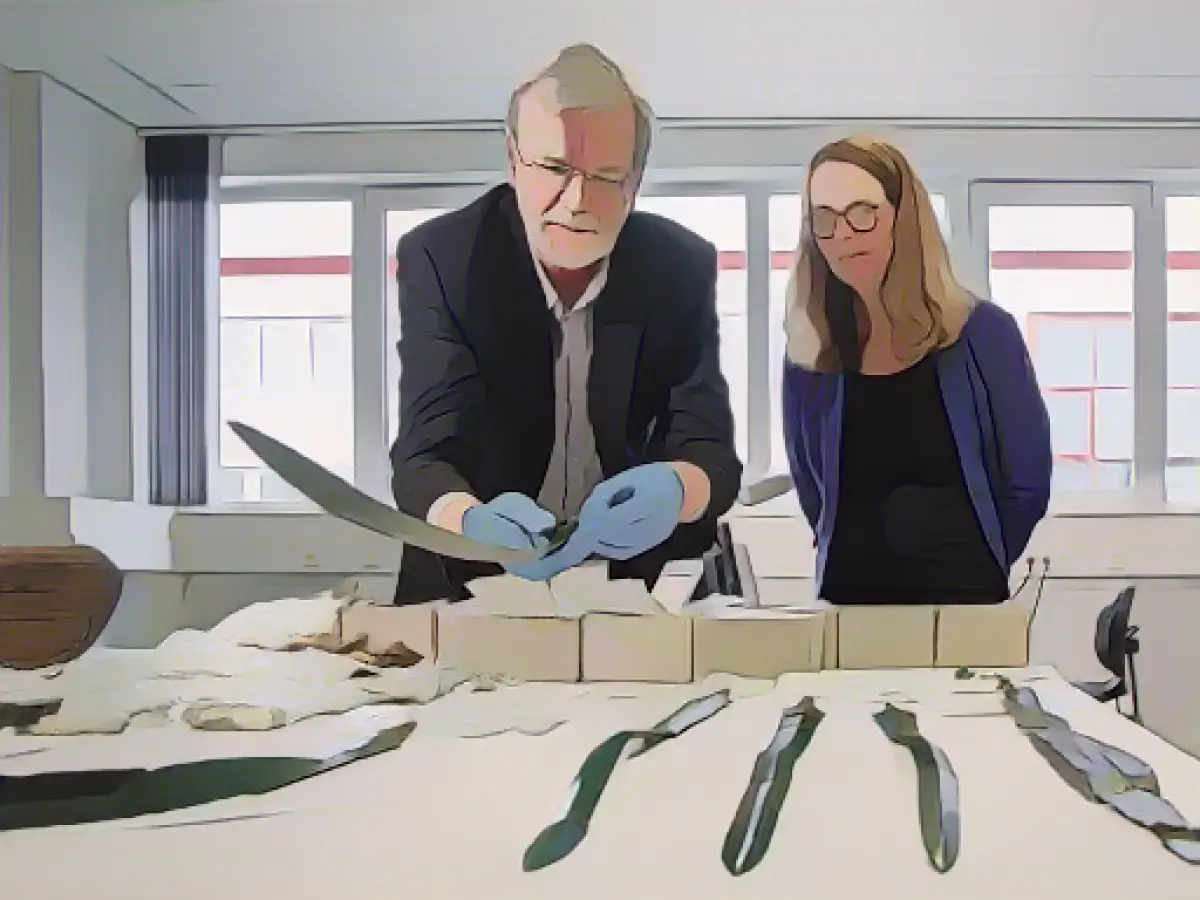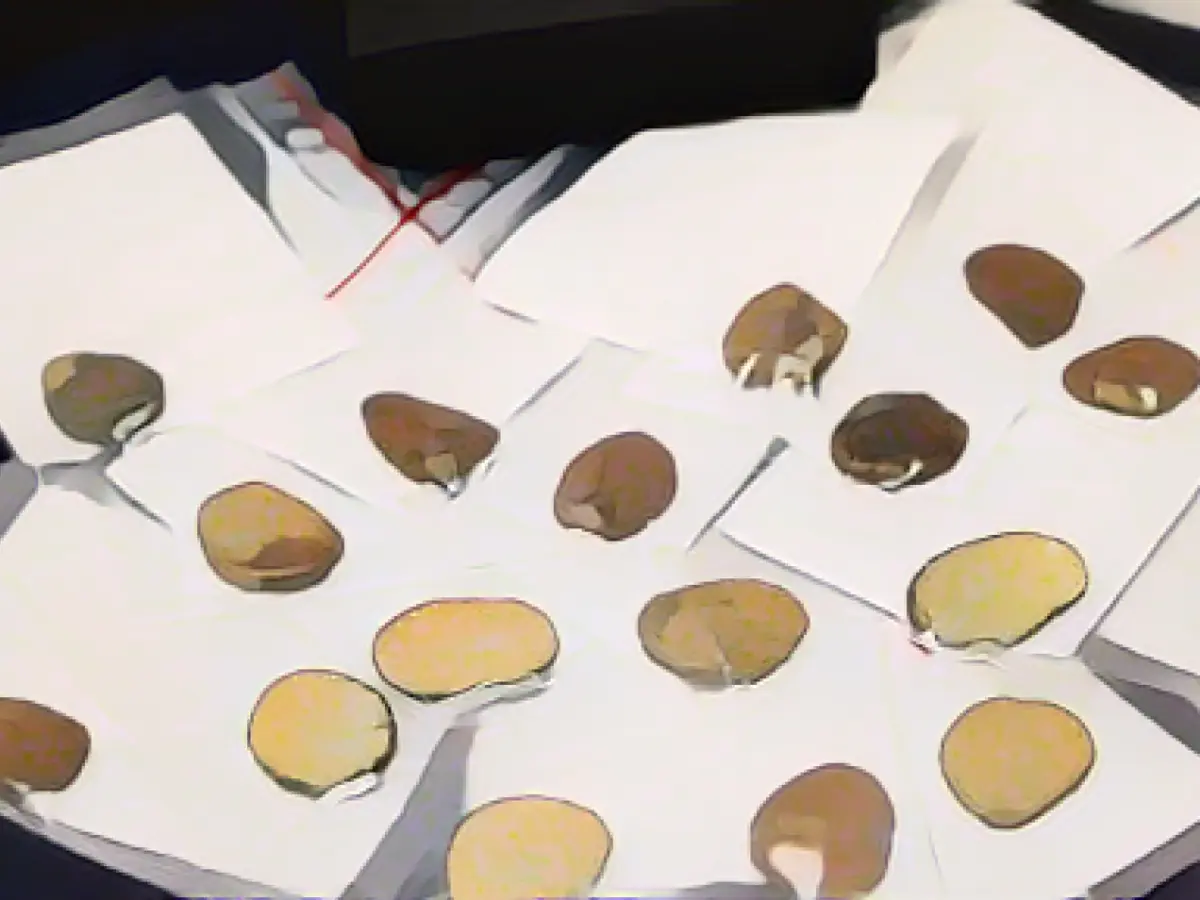Uncovering a Staggering 11th-Century Silver Trove on Rügen
Amateur archaeologists have stumbled upon an astonishing find aboard Rügen, Germany: a hoard of around 6000 silver coins, amounting to an astounding 6.7 kilograms, which dates back to the 11th century. State archaeologist Detlef Jantzen disclosed this discovery during his presentation in Schwerin, declaring it the largest silver treasure unearthed in Mecklenburg-Vorpommern in recent history.
The treasure's value equated to approximately 34 horses or slaves in the 11th century, according to Jantzen. Yet, these figures should be considered rough estimates, given the scarcity of written records detailing prices during that era. The coins were initially buried in a clay pot, but the pot shattered at an uncertain time, possibly during plowing.
A further remarkable discovery this year came in the form of seven elaborately decorated bronze swords, dating back to around 1000 BC. These swords were believed to have been buried as a gift to the gods, according to Jantzen. They were reportedly discovered near Mirow, in the heart of the Mecklenburg Lake District.
However, the swords are said to have been dug up decades ago during excavation work, thereafter scattered around the site. Volunteer archaeologists have painstakingly unearthed them once more, discovering complete and broken swords amongst the debris.
Among these relics, one sword stands out. Its beauty is unparalleled for its age, boasting intricate craftsmanship. Jens-Peter Schmidt, an expert on this period at the State Office for Culture and Monument Preservation, gushed: "It's a very special type that doesn't really occur here, but was imported and came here from the Middle Rhine region."
Bronze Age relics are not uncommon in Mecklenburg-Vorpommern, with the state office keeping more than 200 sword relics in their collection. Schmidt pointed out that bronze weapons and tools were predominantly utilized from around 2000 BC to 600 BC, marking the Bronze Age in the north-east.
An additional 11th-century silver treasure was put on display in Schwerin, alongside pearls believed to originate from the Caucasus region, silver jewelry, and coins. Moreover, several small, ornate silver Christian relic vessels were unearthed. According to Jantzen, these are early manifestations of Christianity in the region.
The hard work of around 250 volunteer archaeologists in Mecklenburg-Vorpommern is of significant importance, as stated by Culture Minister Bettina Martin. She went on to recognize that another 250 volunteers are currently in training, and their contribution is essential for preserving the rich cultural heritage in Mecklenburg-Vorpommern.
The discovery of such an extensive silver hoard on Rügen offers intriguing insights into the monetary system during that era. Further research into archaeology may shed light on the reasons for burying the treasure, providing a glimpse into the economic and societal norms of the 11th century.
The economic system during the 11th century was characterized by the use of silver as a medium of exchange, the emergence of guilds to regulate commerce, the development of credit systems like bills of exchange, and the early influences of mercantilist policies. The discovery of the Hiddensee treasure highlights the value placed on silver in these transactions.








